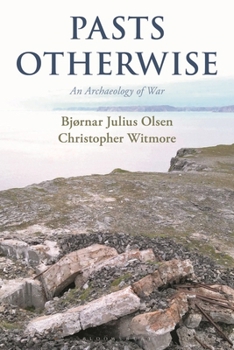Pasts Otherwise: An Archaeology of War
Unleash archaeology's potential by turning toward pasts that resist historical time and reveal the power of an archaeology other than history.
History has long shaped our expectations of what the past is and how it should be recalled, written, and displayed. Thus while objects of all ages endure and accumulate around us-often broken and fragmented-we continue to interpret them through historical tropes of completion, succession, and replacement. What if we were to see this indiscriminate persistence and fragmentation not as archaeological defects to be mended by history and historical narration, but as material expressions suggestive of pasts other than history? What might these other pasts look like, and how might we account for them?
Format:Hardcover
Language:English
ISBN:B0F29T4KMC
ISBN13:9798881805463
Release Date:February 2026
Publisher:Bloomsbury Academic
Length:240 Pages
Customer Reviews
0 rating





